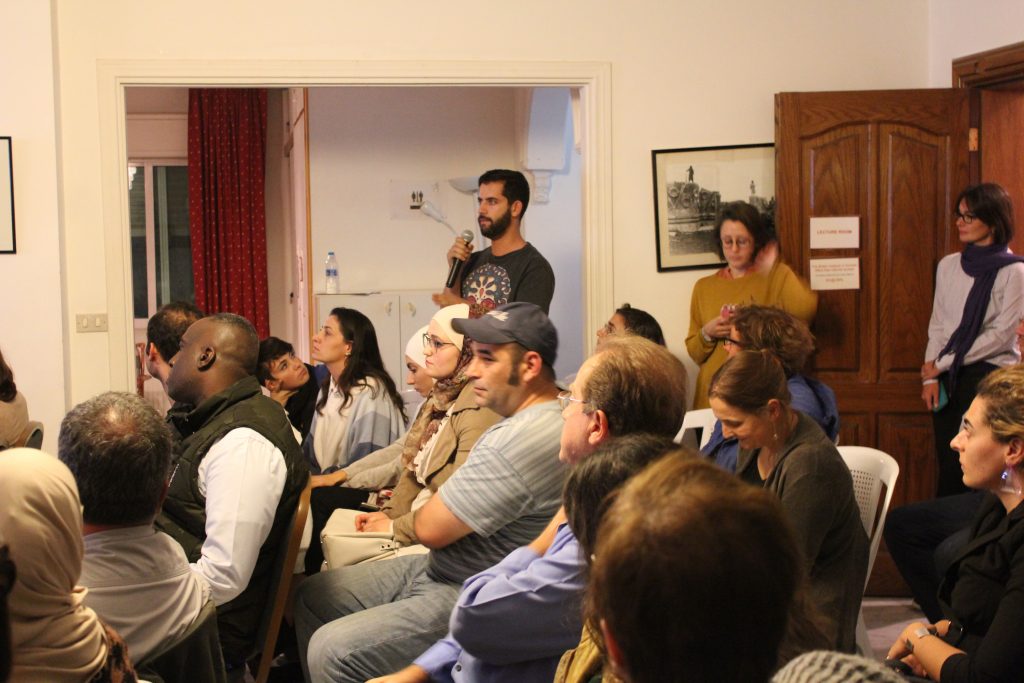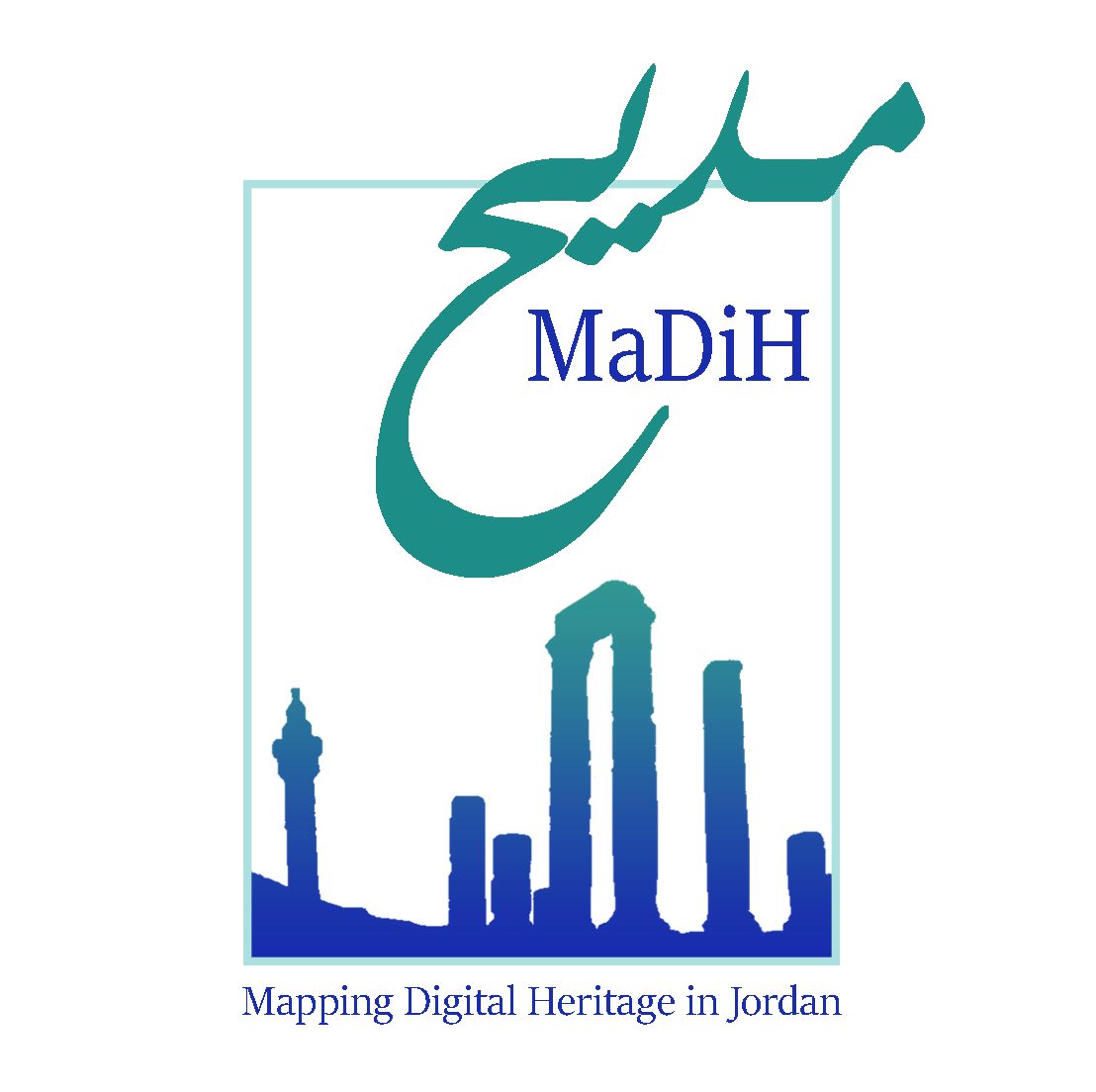MaDiH (مديح): Project Launch and Public Lecture – Amman, 28th October 2019
The British Institute in Amman hosted MaDiH (مديح)’s first public event marking its official launch in memory of the project initiator Dr Andrea De Silva Zerbini.
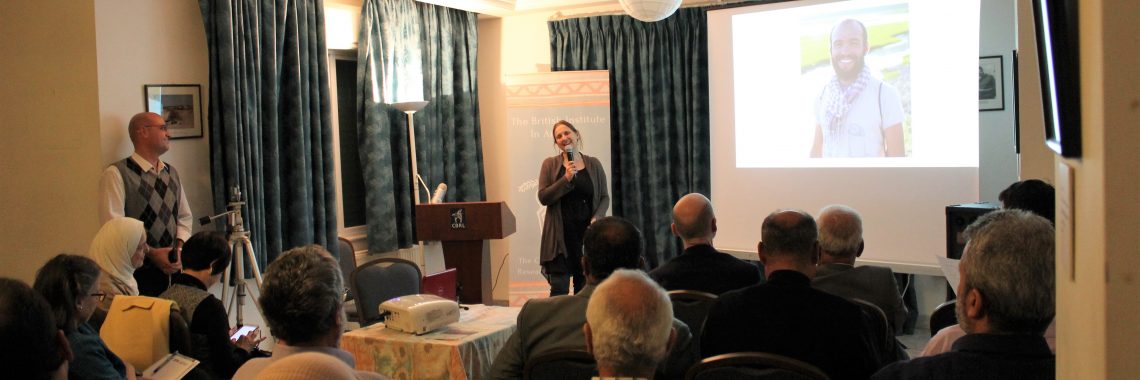
By Alessandra Esposito
The MaDiH (مديح): Mapping Digital Cultural Heritage in Jordan project was officially launched on the 28th of October 2019 in the Lecture Hall of the British Institute in Amman and streamed live via the Council for British Research in the Levant (CBRL) Facebook page.
The event opened with a heartfelt memorial of the driving force of MaDiH (مديح), Dr Andrea De Silva Zerbini, the late Assistant Director of CBRL and IT and GIS Officer of the EAMENA project. Reflecting this double commitment, his tribute was delivered by Dr Carol Palmer, Director of CBRL, and Dr Robert Bewley, the EAMENA Project Director. Dr Fadi Bala’awi, Dean of Queen Rania Faculty of Tourism and Heritage at Hashemite University and Dr James Smithies, Director of King’s Digital Lab and Deputy-Director of eResearch at King’s College London took over as main speakers of the public lecture.
Dr Bala’awi opened by honouring Andrea as MaDiH (مديح)’s engine and traced the first steps of the project to a 2 days workshop held in the Museum of Jordan in Amman in 2018. Here, the future PIs of MaDiH (مديح) had the opportunity to reflect on the current digital infrastructure status of Jordanian cultural heritage, characterised by an archipelago of individual digitisation projects.
Jordan’s heritage has a unique and ambivalent character: on the one hand, the country is incredibly rich in artifacts, sites, and cultural expressions that qualify as heritage; on the other, this same richness has proven challenging to manage and coordinate for the Jordanian government infrastructures.
The increase in digitisation projects in Jordan has certainly had the advantage of providing new methodologies for the preservation and conservation of its cultural heritage, especially when it comes to presenting and engaging with it, amplifying its attractiveness and accessibility. This has made digitalisation a central element of several disciplines concerned with managing and promoting Jordanian heritage, namely Culture Resources Management, Tourism, and Conservation.
At this point in time however, the proliferation of digitization projects has generated a huge amount of digital data which has not been made accessible by researchers and professionals working with Jordanian cultural heritage. This lack of accessibility and awareness of the digitization projects presents a further risk, namely repeating similar digitizing projects over and over.
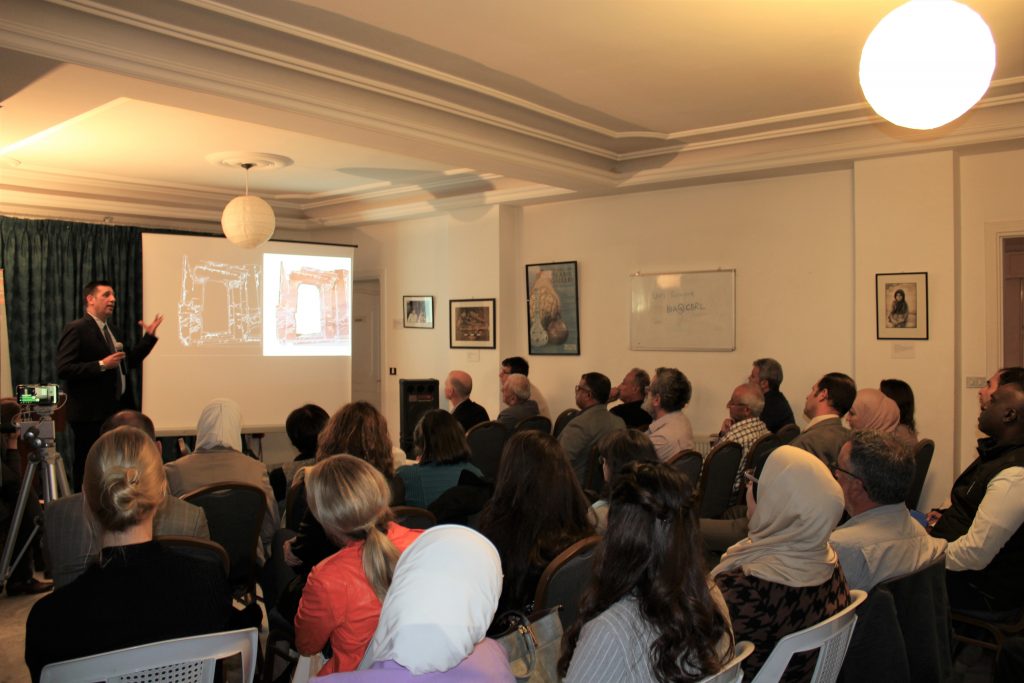
This is one of the great benefits of the MaDiH (مديح) project. The creation of a proof of concept national repository mapping the past and current digitisation projects of Jordanian cultural heritage will allow the scoping of future phases, eventually limiting the repetition of similar projects whilst providing information on how to access existing data. As the MaDiH (مديح) repository will be online and open-source, it will boost the online profile of Jordan’s cultural heritage while increasing accessibility for governmental and local decision makers, researchers, and the public at large. Potential future phases of MaDiH (مديح) could lead to the creation of a national Jordanian centre for digital cultural heritage studies.
Dr Smithies addressed the current global panorama of digital technologies in humanities and in cultural heritage in particular. The proliferation of digitisation projects have resulted in a range of quality and accessibility outcomes. In Australasia as well as in the UK, the trend is now to look back on this development phase of digital archiving and reset the standards to allow for a more functional and sustainable global infrastructure for digital humanities. Preliminary analyses of the Jordanian digital heritage terrain show that there has often been a disconnection between researchers producing targeted datasets and the needs of the Department of Antiquities.
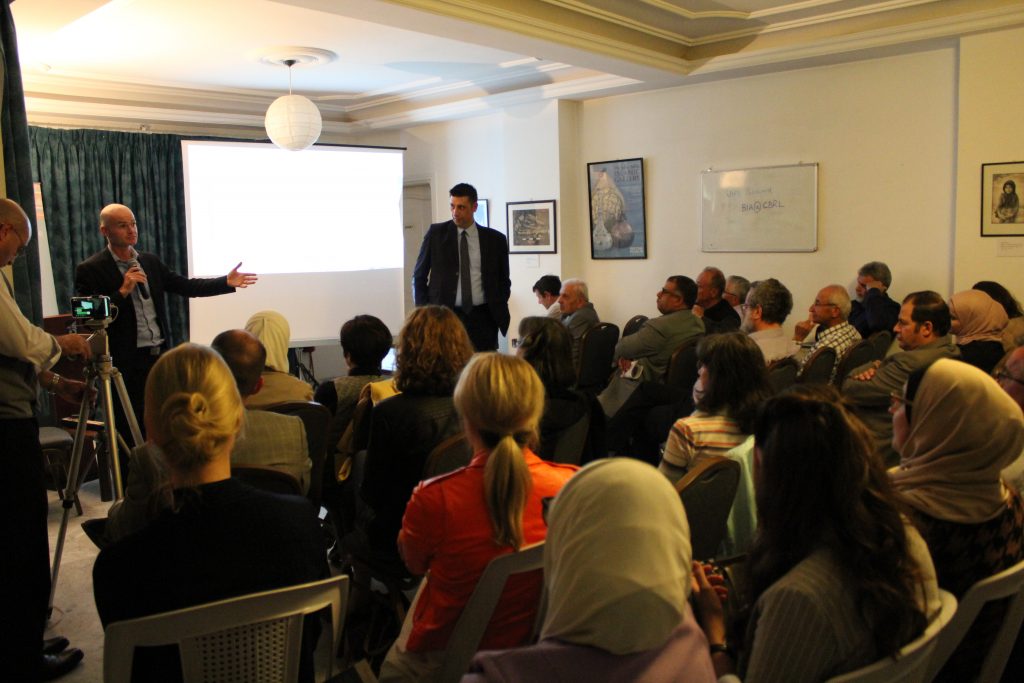
MaDiH (مديح) fits perfectly in this global trend as it is designed as a scoping exercise to assess the number, quality, and accessibility of datasets related to Jordanian cultural heritage and build on these findings. All analyses produced by MaDiH (مديح) will be aligned to governmental strategies related not only to the management of cultural heritage, but also to Jordanian economic strategies. These findings will be disseminated via two white papers, a technical and a policy one. The technical white paper will describe the types of datasets that have been mapped and will contain recommendations on heritage digital infrastructure. The policy white paper will assess the current status of policies and strategies related to open data policies and heritage in Jordan with suggestions on strengthening national digital cultural heritage strategies.
The technical output of this first phase is a prototype national repository that will be live for 3 or 4 years and useful to assess future investments for further implementation. Crucial for these further phases of MaDiH (مديح) is building a community that brings together technical staff, researchers, professionals, and the general public, to understand their needs. For this reason, crucial to MaDiH (مديح), are engagement events, like this workshop, a future workshop in April 2020 hosted at Hashemite University and the closing event of the project coinciding with a Hackathon in November 2020, in partnership with the Jordanian Open Source Association (JOSA). During the Hackathon, software engineers will be invited to work with the sources of data and digital content collected during the course of MaDiH (مديح) to build digital products and systems.
The public lecture was followed by an engaged Q&A session and was the object of an article in the Jordan Times by Saeb Rawashdeh.
